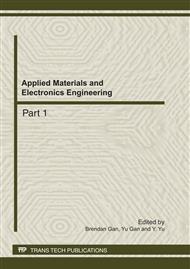p.137
p.143
p.147
p.151
p.157
p.161
p.166
p.171
p.179
The Influence of Dipeptide Composition on Protein Folding Rates
Abstract:
Understanding the relationship between amino acid sequences and folding rates of proteins is an important challenge in computational and molecular biology. All existing algorithms for predicting protein folding rates have never taken into account the sequence coupling effects. In this work, a novel algorithm was developed for predicting the protein folding rates from amino acid sequences. The prediction was achieved on the basis of dipeptide composition, in which the sequence coupling effects are explicitly included through a series of conditional probability elements. Based on a non-redundant dataset of 99 proteins, the proposed method was found to provide an excellent agreement between the predicted and experimental folding rates of proteins when evaluated with the jackknife test. The correlation coefficient was 87.7% and the standard error was 2.04, which indicated the important contribution from sequence coupling effects to the determination of protein folding rates.
Info:
Periodical:
Pages:
157-160
Citation:
Online since:
October 2011
Authors:
Price:
Сopyright:
© 2012 Trans Tech Publications Ltd. All Rights Reserved
Share:
Citation:


